Weekly recap
US stocks were mixed during the holiday-shortened week, and gains on Friday helped indices finish off the worst levels. The economic calendar was quiet, and fundamental developments were lacking. Instead, the underperformance at the start of last week was partially attributed to some profit-taking at year-end.
Despite the sell-off in US equities, 2024 marked the second straight year of annual gains above 20% for the S&P500, marking the best two-year stretch in 25 years. The tech-heavy Nasdaq also finished the year up over 20% for the sixth time in eight years.
Oil surged almost 5% last week, boosted by cold weather in Europe and the prospect of additional stimulus in China. US crude oil inventories declined, also underpinning prices. Oil broke out of range for the first time in two months.
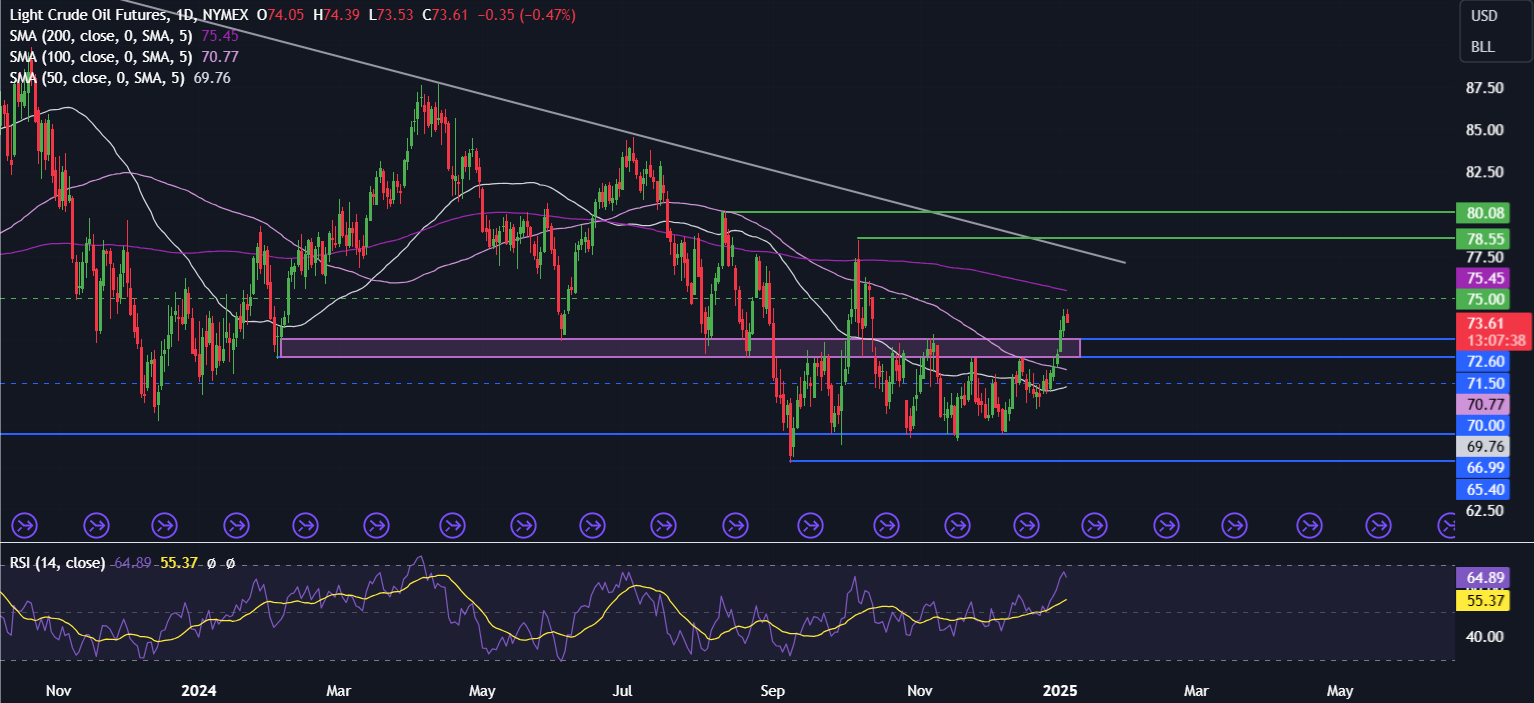
Week Ahead
Eurozone CPI (Tuesday)
Expectations are for Eurozone inflation to rise to 2.4% YoY in December, up from 2.2%, while core inflation, which strips out more volatile items such as food and fuel, is expected to remain unchanged at 2.7%. This suggests that the recent inflation rise is driven by energy and food inflation. However, the figures still remain close to the ECB’s 2% target, and an inline release could boost calls for further easing by the central bank, particularly given the weaker economic outlook. It’s worth noting that regional inflation prints will be reported on Monday, with Germany and Spain under the spotlight. The ECB is expected to cut rates by 25 basis points in the January meeting, with a total of four quarter basis point cuts expected by the end of this year.
The ECB cutting rates more aggressively could keep EUR/USD under pressure. Meanwhile, hotter-than-expected inflation could give the pair a small boost as it trades at around a 2-year low.
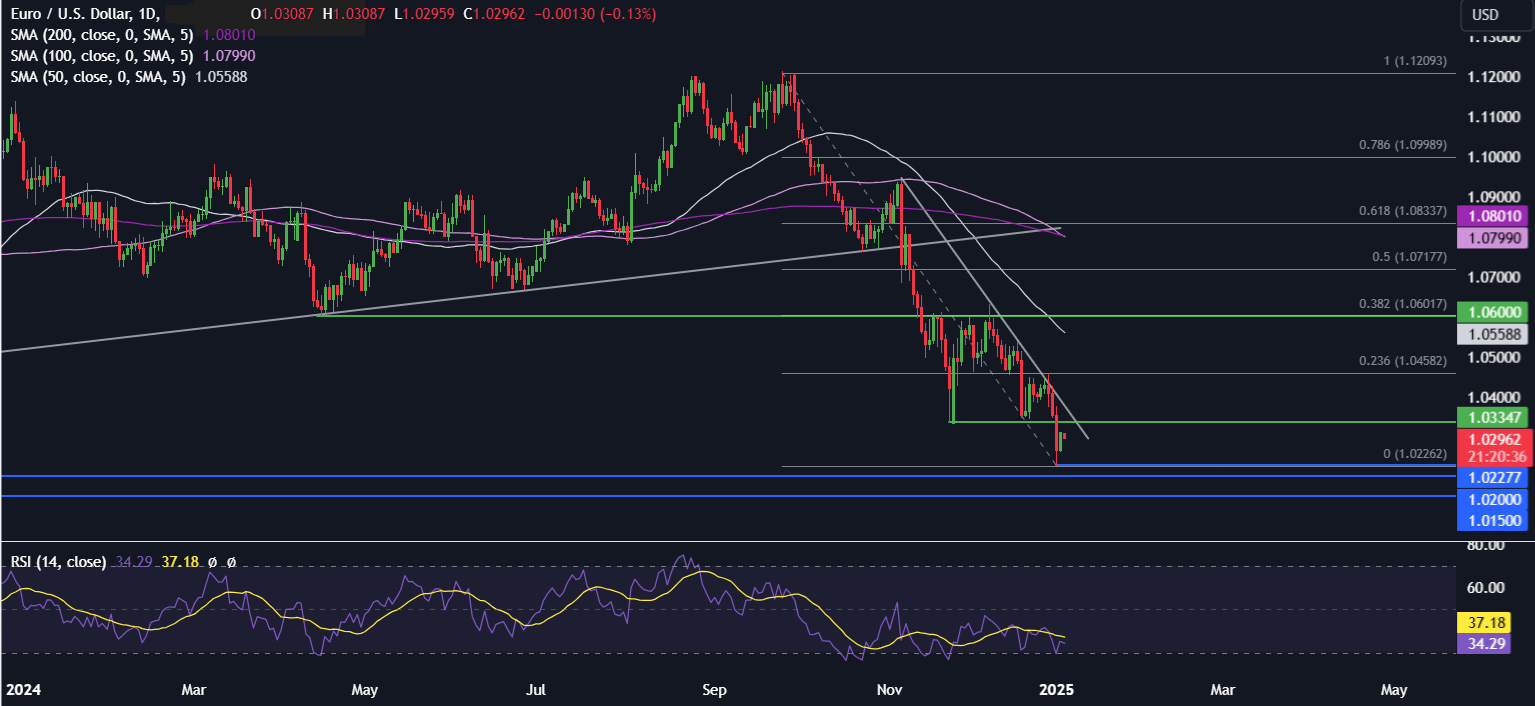
US ISM services PMI (Tuesday)
Economists are expecting the US services ISM to rise to 53.5 in December from 52.1 in November. The data comes after S&P Global’s flash PMI data for December showed services activity rising to a 38-month high of 58.5 from 56.1. However, the prices paid subcomponent showed inflation remained subdued, with prices rising at the slowest rate since June 2020. A continuation of this trend would support the view that the US economy remains on a solid footing but not too hot to spur a strong rebound in inflation. This Goldilocks scenario could help US stocks post further gains at the start of a busy week.
The S&P500 recovered from a low of 5830 last week, rising above 5900. Solid ISM services data could support further gains.
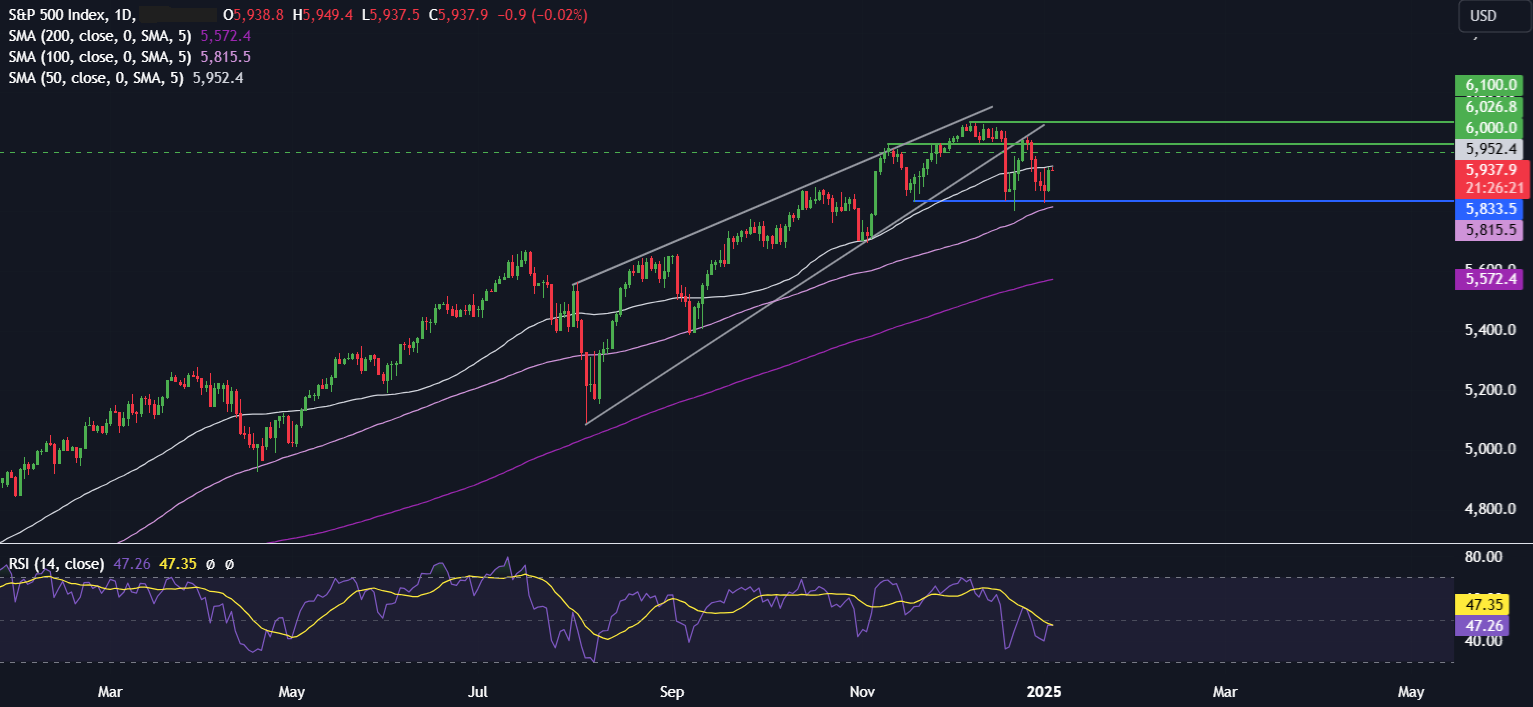
Fed minutes (Wednesday)
At the December meeting, the Fed cut rates by 25 basis points to 4.25% to 4.5%, in line with expectations. However, the vote was split 11 – 1, with Hammack voting to leave rates unchanged, and policymakers signaled a slower pace of rate cuts ahead. The updated projections showed that the Fed expects to cut rates by a median of 2 reductions in 2025. Core PCE inflation is expected to end 2025 at 2.5%, up from 2.2% previously. Unemployment was expected to rise modestly to 4.3% by the year-end. Federal Reserve Chair Powell noted that the policy stance is now significantly less restrictive and warned that the Fed could be more cautious going forward. Should the minutes highlight this caution amid policymakers, particularly as US president-elect Trump’s new term is set to begin, this could keep the USD supported and weigh on precious metal Gold.
The chart shows that XAU/USD (Gold) has recovered from the December low of 2580 but remains below December’s high of 2726.
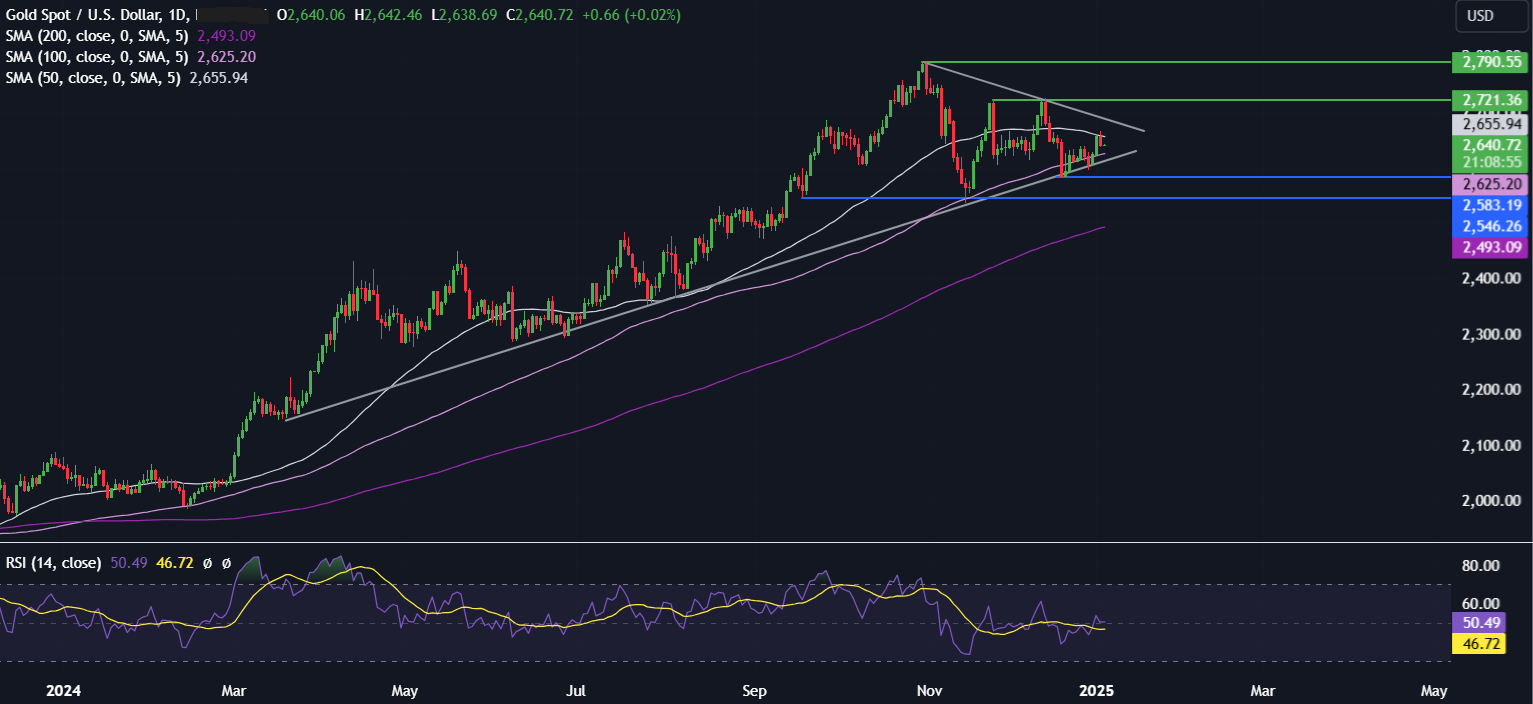
Australian CPI (Wednesday)
Australia’s inflation data for November is expected to have ticked higher to 2.3% annually, up from 2.1% in October, as food and housing price increases are expected. The data will be a clear focus for the RBA after the latest central bank statement suggested that some upside risk to inflation appears to have eased. The RBA also said the board is gaining confidence that inflation is moving sustainably towards target. However, policymakers will want to see more progress in underlying inflation before cutting interest rates. The market believes the RBA could cut rates in February, although this will be data-dependent. Interestingly, the RBA has remained one of the most hawkish major central banks. Yet, the AUD/USD was notably weak in 2024, weighed down by worries regarding China.
AUD/USD remains depressed near its 2-year low at 0.6170 after falling from a 0.6950 peak in October.
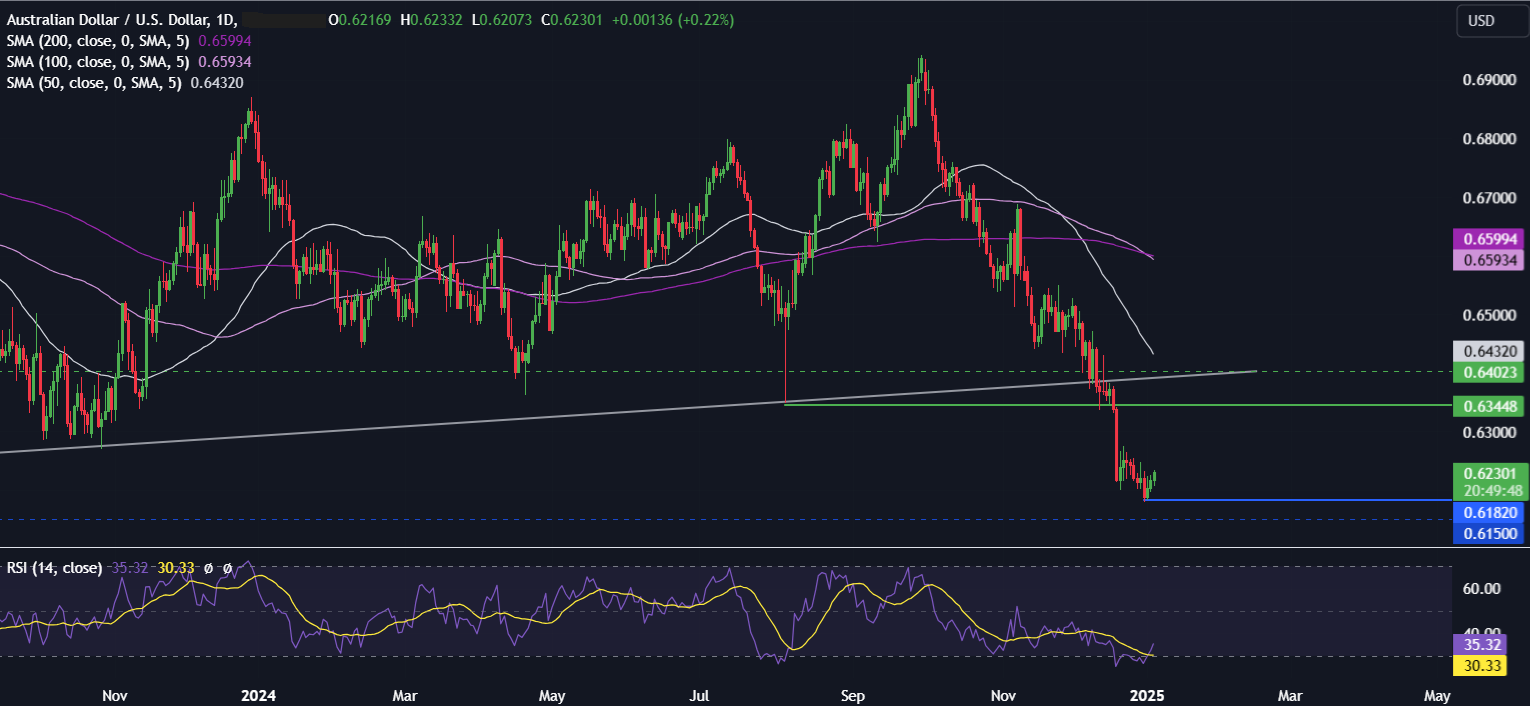
US Non-farm payroll report (Friday)
The US jobs report will be the highlight for the week and the first major test for the markets in 2025. Economists expect the US to have added 150k jobs in December versus 227k in November. Meanwhile, the unemployment rate is expected to remain unchanged at 4.2%. This is expected to be the first jobs data showing payrolls normalizing after recent non-farm payrolls have been affected by hurricanes and strike action. The market will be watching lead indicators, including ADP payrolls and job openings, for further signals ahead of the main release on Friday. The US labour market is expected to remain strong but not overheated. Investors remain wary of an overly strong economy which could revive inflation. The market is looking for that Goldilocks number, which is neither too strong nor too weak, to support the view that the Fed could continue to cut rates or be it at a gradual pace.
USD/JPY continues to hover around 158.00. Strong US jobs data could lift the pair to a fresh 6-month high.
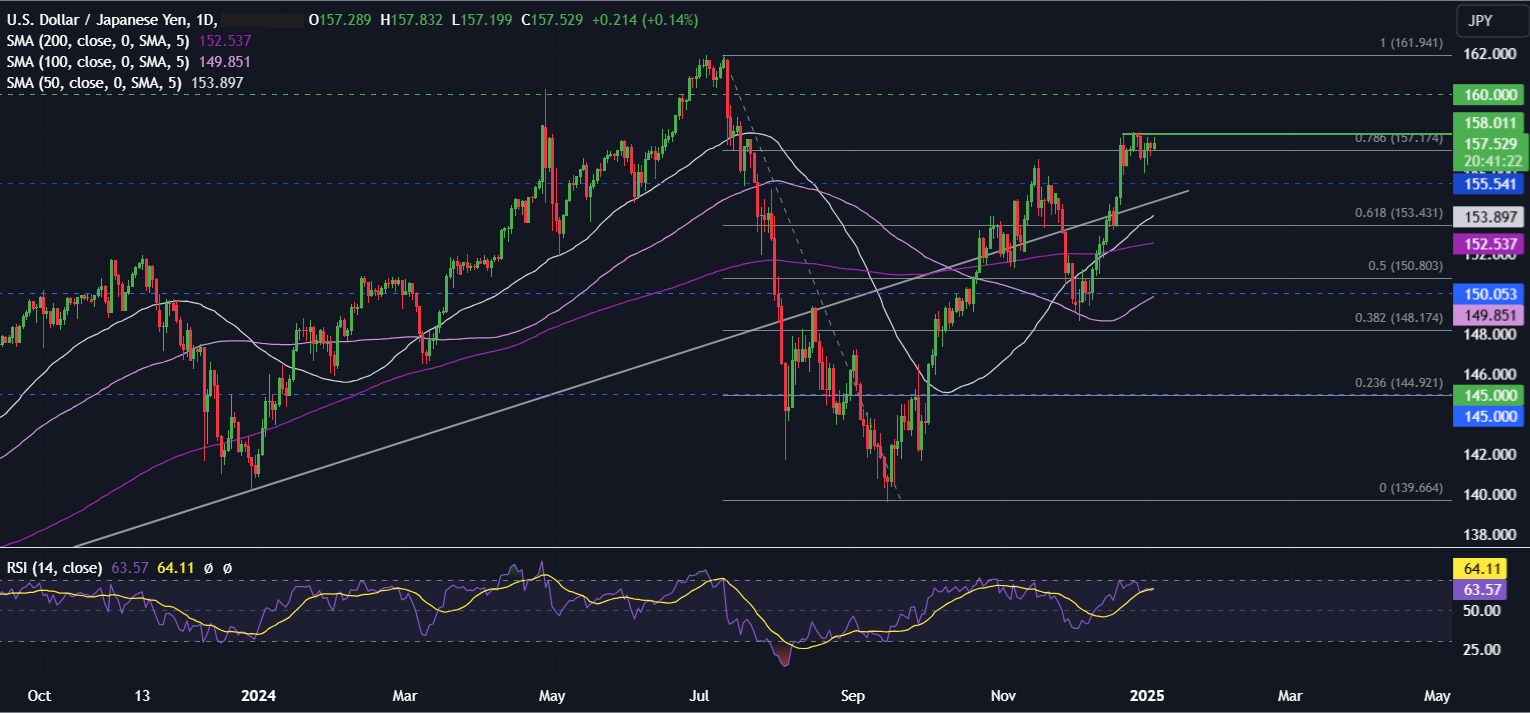
Chinese CPI (Friday)
Chinese CPI for December is forecast to remain at 0.2% year on year, whilst wholesale inflation, as measured by PPI, is forecast to tick slightly higher to -2.4% from -2.5%. The data will help provide more clues about the health of the Chinese economy against the backdrop of subdued domestic demand, recently announced stimulus, and ahead of potential US tariffs amid incoming President Trump. The latest PMI releases suggest that existing policies and stimulus measures have had a modestly positive effect; however, pressure remains as domestic demand is tepid and amid unfavourable external factors.
Weak Chinese data could drag the Hang Seng lower.
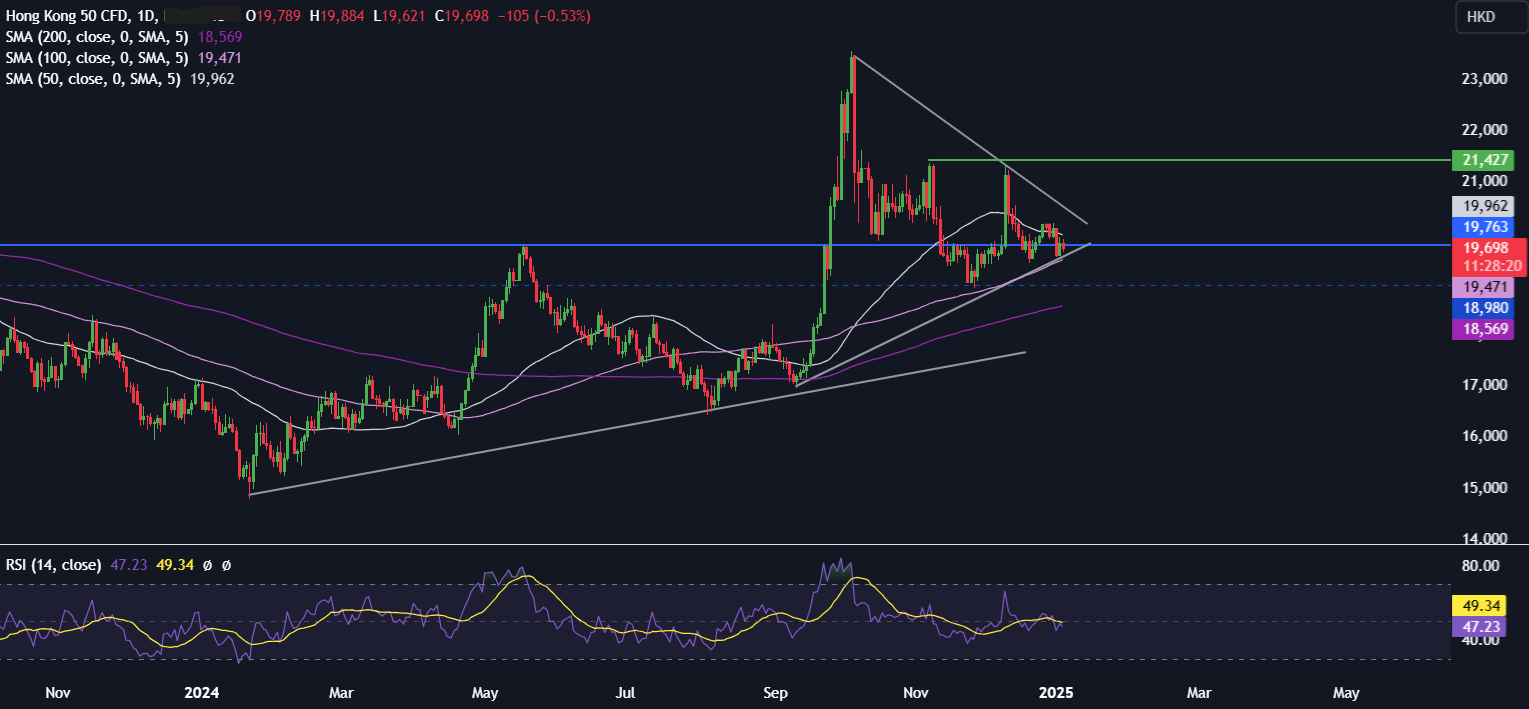
Canada jobs data (Friday)
As well as the US, Canada will also release jobs data which could help shape expectations surrounding the Bank of Canada’s meeting on January 29. Recent job reports have seen a notable increase in unemployment; however, widespread job losses typically seen in a recession have not yet occurred. The market is currently pricing in a 72% probability of a 25 basis point rate cut later this month. Signs of a significantly weaker job market could lift this probability. The Bank of Canada cut rates by 50 basis points for a second consecutive meeting in its most recent gathering and signaled a slowing pace to rate cuts ahead.
Should the data support further rate cuts from the Bank of Canada, the loonie could weaken further, driving USD/CAD higher.
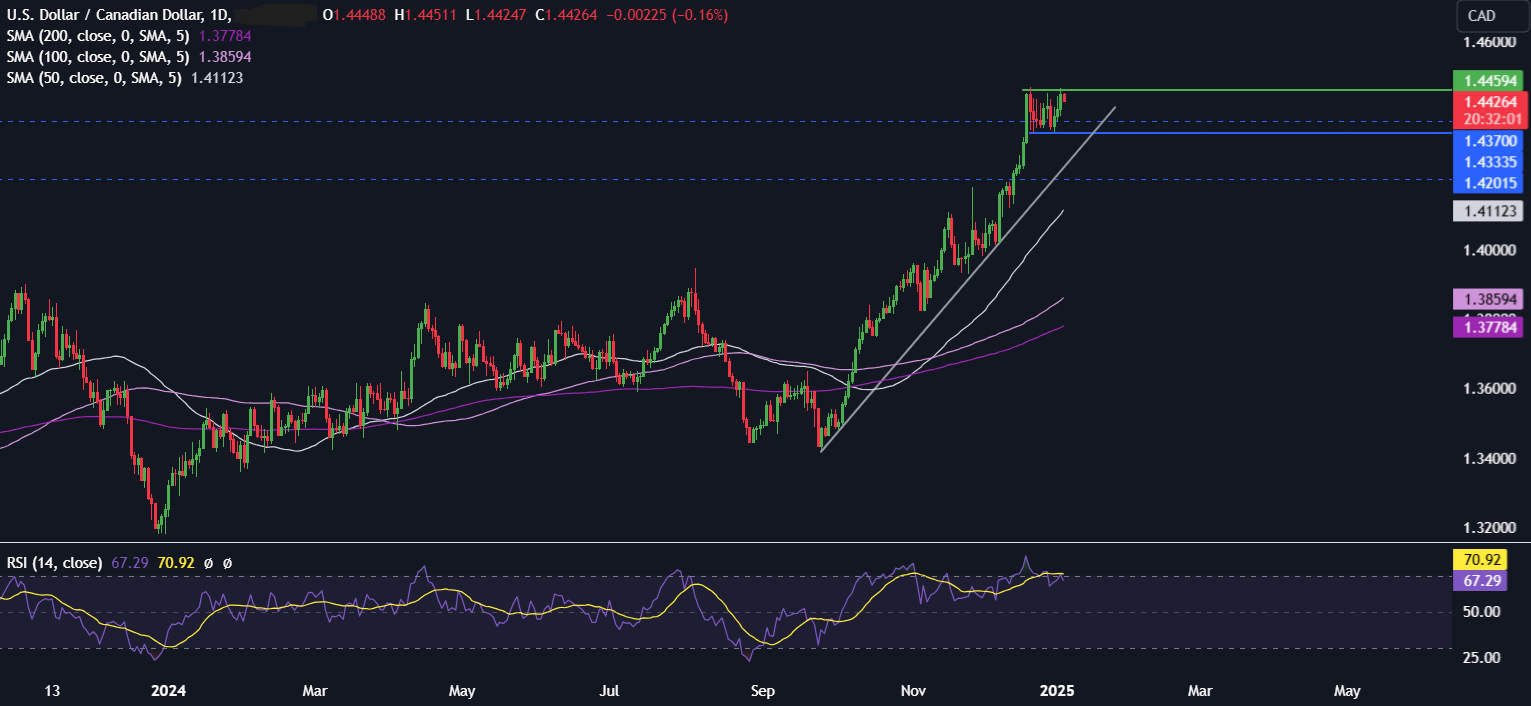
The content provided here is for informational purposes only. It is not intended as personal investment advice and does not constitute a solicitation or invitation to engage in any financial transactions, investments, or related activities. Past performance is not a reliable indicator of future results.
The financial products offered by the Company are complex and come with a high risk of losing money rapidly due to leverage. These products may not be suitable for all investors. Before engaging, you should consider whether you understand how these leveraged products work and whether you can afford the high risk of losing your money.
The Company does not accept clients from the Restricted Jurisdictions as indicated in our website/ T&C. Some services or products may not be available in your jurisdiction.
The applicable legal entity and its respective products and services depend on the client’s country of residence and the entity with which the client has established a contractual relationship during registration.




